Are The Baffling La Marche Cave Paintings Authentic Or Cunning Forgeries?
Ellen Lloyd - AncientPages.com - Every now and then, we come across strange and controversial archaeological discoveries that are naturally of great interest to all truth-seekers. In most cases, investigating the unusual findings can be difficult because sometimes ancient objects are “lost” or misplaced.
This problem is not present in cave paintings because engravings cannot be easily “removed” out of sight. This brings us to today’s subject, which concerns very unusual cave paintings in France.
Few European places have caused controversy like the strange La Marche cave. Scientists continue to argue over the unorthodox cave paintings that challenge our knowledge of ancient history. Are the extraordinary cave paintings authentic or cunning forgeries?

Faces carved on the floor of a cave at La Marche. Credit: Fuentes Oscar
Frankly, in this case, we must say that these baffling cave paintings seem almost too good to be true. Did someone commit a horrible archaeological crime by deliberately creating these paintings? If so, then for what reason?
La Marche is a cave located near the village of Lussac-les-Châteaux, Vienne, in western France. It is one of the most important archaeological sites for stone carvings from the Magdalenian period, 17,000 - 12,000 years ago.
Between 1937 and 1940, Léon Péricard and Stéphane Lwoff discovered the cave complex, which contained approximately 1,500 limestone stones with carvings depicting bears, lions, antelopes, and horses, as well as 155 curiously realistic human figures.
The humans depicted on the cave walls are puzzling. They are very different from other Paleolithic drawings and resemble caricatures of real people: old men, children, men whose faces are shaved, and women (often obese), sometimes dressed in coats and with hats and boots. Several of them have ornaments on their bodies that can be interpreted as paintings or perhaps tattoos.
The interpretations of these remarkable carvings are controversial and still disputed. Many scientists consider them forgeries because the ‘real’ people in La Marche Cave resemble modern art.
The carvings are also difficult to interpret because sometimes one image overlaps with another or several of them.
The depictions date back to about 15,000 - 13,000 B.C., and we know that at the time, Europe was largely under the weight of glaciers. It was before great civilizations appeared.
If the paintings are authentic, one must question the existence of primitive man as we know it. However, it’s hard to imagine the drawings are real because nothing similar has been found elsewhere in Europe.
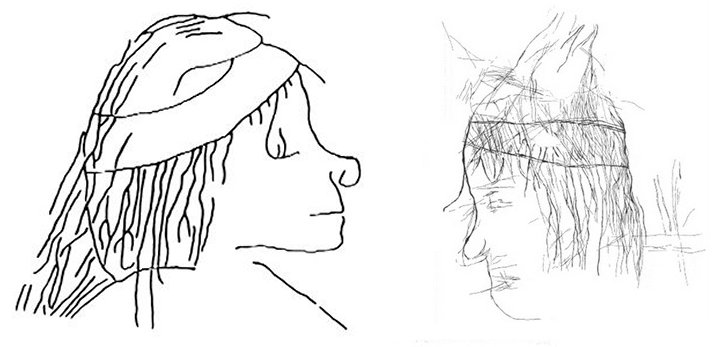
The La Marche cave paintings are intriguing, but are they authentic? Credit: Fuentes Oscar
The Lascaux cave, located on a hill at Dordogne, near Montignac, in southern France, is famous for its outstanding Magdalenian paintings, but the images we come across there certainly do not resemble anything we find in the La Marche cave.
Ancient Pages explained previously, the “brilliant prehistoric paintings of Lascaux, with their anatomically perfect details of all depicted animals, are rendered with great art skills like shadowing, highlighting, stenciling, and the use of perspective, a technique that was not rediscovered until the Golden Age in Greece.

Lascaux cave paintings depicting animals. Credit: Public Domain
However, looking at the millennia-old Paleolithic artwork of Lascaux, where only simple stick figures represent a man, we cannot tell if the artists were a Neanderthal man or Cro-Magnon man or perhaps someone else.”
Compared to the Lascaux cave paintings, the carved etchings at La Marche appear crude and far too modern.
It’s also worth noting that people depicted on the walls at La Marche are dressed in rather modern clothes. This may perhaps not be so surprising considering ancient figurines of men and women wearing modern-day clothes have been previously encountered in Europe.
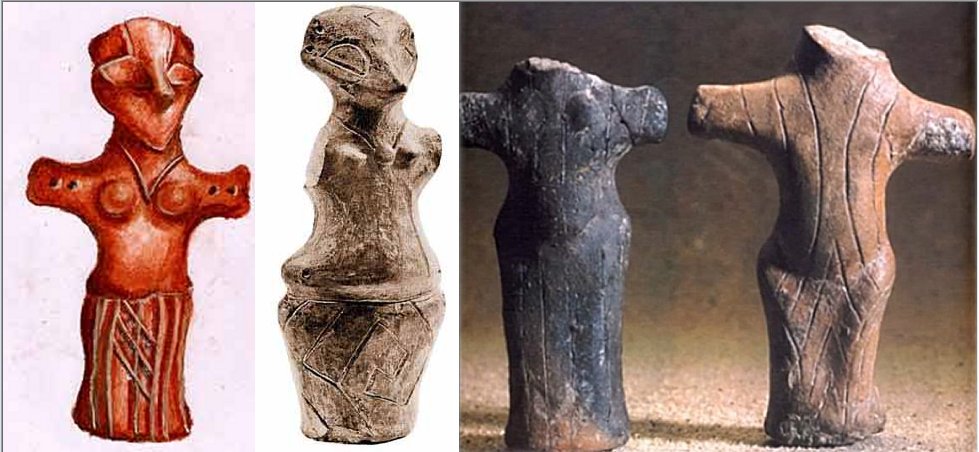
The Vinca figurines.
“The Vinca legacy includes among others, curious masks and the most informative costumed figurines depicting women in extremely modern clothes like narrow skirts, and sleeveless upper-body panels, complimented with hip belts, aprons, jewelry, shoes, caps, hairstyles, bracelets, necklaces, and medallions.”
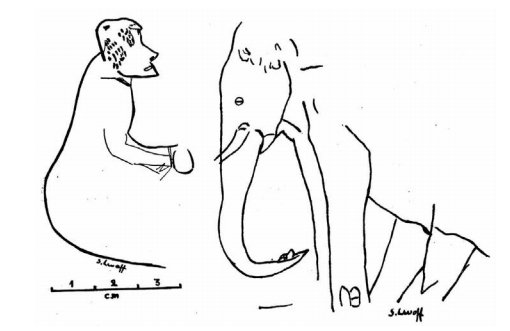
Is this an authentic carving of a woman who lived during the Magdalenian period? Credit: Fuentes Oscar
However, the Vinca culture in southeastern Europe, present-day Serbia, and smaller parts of Bulgaria, Macedonia, and Romania flourished from about 6000 BC to 3000 B.C.. Though Vinca's living style reminds us of our own, it cannot be compared to the engravings found inside the La Marche cave.
Some scientists think the La Marche cave paintings are authentic, but there are also many experts who doubt the engravings were produced during the Magdalenian period.
Regarding the La Marche cave paintings, the verdict is still out there.
Updated on July 31, 2024
Written by Ellen Lloyd – AncientPages.com
Copyright © AncientPages.com All rights reserved. This material may not be published, broadcast, rewritten or redistributed in whole or part without the express written permission of AncientPages.com
Expand for referencesFuentes, Oscar & Lucas, Claire & Robert, Eric. (2017). An approach to Palaeolithic networks: The question of symbolic territories and their interpretation through Magdalenian art. Quaternary International. 503. 10.1016/j.quaint.2017.12.017.
More From Ancient Pages
-
 Unlocking The Secrets Of Lost Prehistoric Land Hidden Beneath The Sea
News | Sep 8, 2015
Unlocking The Secrets Of Lost Prehistoric Land Hidden Beneath The Sea
News | Sep 8, 2015 -
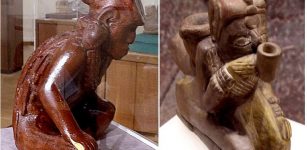 Unsolved Prehistoric Enigma Of Sophisticated Spiro People And Their Mysterious Mounds
Civilizations | Oct 25, 2018
Unsolved Prehistoric Enigma Of Sophisticated Spiro People And Their Mysterious Mounds
Civilizations | Oct 25, 2018 -
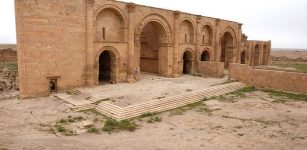 Hatra: Ancient Powerful Caravan City That Could Withstand Invading Roman Armies
Featured Stories | Dec 12, 2020
Hatra: Ancient Powerful Caravan City That Could Withstand Invading Roman Armies
Featured Stories | Dec 12, 2020 -
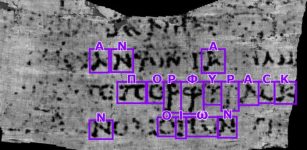 Major Breakthtrough – Ancient Herculaneum Scroll Deciphered For The First Time
Artifacts | Oct 20, 2023
Major Breakthtrough – Ancient Herculaneum Scroll Deciphered For The First Time
Artifacts | Oct 20, 2023 -
 First Early Roman Fortlet Found On The Isle of Anglesey, North Wales
Archaeology | Nov 26, 2015
First Early Roman Fortlet Found On The Isle of Anglesey, North Wales
Archaeology | Nov 26, 2015 -
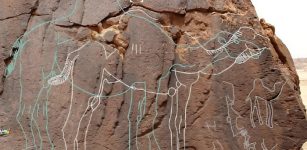 Remarkable Neolithic Life-Sized Camel Engravings Discovered In The Nefud Desert
Archaeology | Oct 5, 2023
Remarkable Neolithic Life-Sized Camel Engravings Discovered In The Nefud Desert
Archaeology | Oct 5, 2023 -
 Norse God Tyr Who Gave Viking Warriors Courage And Self-Confidence In Battle
Featured Stories | Mar 7, 2018
Norse God Tyr Who Gave Viking Warriors Courage And Self-Confidence In Battle
Featured Stories | Mar 7, 2018 -
 Linked Human Skeletons Lying In Spiral Circle Unearthed In Pre-Aztec Burial Pit Near Mexico City
Archaeology | Feb 7, 2018
Linked Human Skeletons Lying In Spiral Circle Unearthed In Pre-Aztec Burial Pit Near Mexico City
Archaeology | Feb 7, 2018 -
 Mysterious Menga Dolmen: A New Very Old Monument Discovered
Archaeology | Sep 21, 2020
Mysterious Menga Dolmen: A New Very Old Monument Discovered
Archaeology | Sep 21, 2020 -
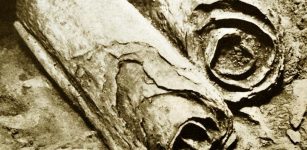 U.S. Bible Museum Says Five Dead Sea Scrolls Fragments In Their Collection Are Fake
Archaeology | Oct 25, 2018
U.S. Bible Museum Says Five Dead Sea Scrolls Fragments In Their Collection Are Fake
Archaeology | Oct 25, 2018 -
 On This Day In History: The Gregorian Calendar Implemented – On Oct 5, 1582
News | Oct 5, 2016
On This Day In History: The Gregorian Calendar Implemented – On Oct 5, 1582
News | Oct 5, 2016 -
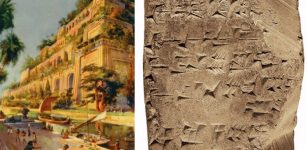 Modern Banking Concept Started In Ancient Babylonian Temples
Ancient History Facts | Mar 7, 2016
Modern Banking Concept Started In Ancient Babylonian Temples
Ancient History Facts | Mar 7, 2016 -
 Secret Hidden Freemasonic Messages Concealed In Ancient Egyptian Artifacts And Roman Works – Curious Stellar Symbol – Part 2
Ancient Mysteries | Feb 23, 2022
Secret Hidden Freemasonic Messages Concealed In Ancient Egyptian Artifacts And Roman Works – Curious Stellar Symbol – Part 2
Ancient Mysteries | Feb 23, 2022 -
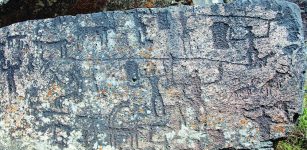 15 Prehistoric Rock Paintings Discovered Near Ancient Armenian City Of Ani
Archaeology | Dec 14, 2015
15 Prehistoric Rock Paintings Discovered Near Ancient Armenian City Of Ani
Archaeology | Dec 14, 2015 -
 Mystery Of Vangchhia Ancient Site: Water Pavilion And Ingenious Idea Of Water Harvesting
Archaeology | Feb 21, 2019
Mystery Of Vangchhia Ancient Site: Water Pavilion And Ingenious Idea Of Water Harvesting
Archaeology | Feb 21, 2019 -
 Aglaonice (Aganice): Female Greek Astronomer From Thessaly Was Believed To Be A Witch
Featured Stories | Sep 4, 2019
Aglaonice (Aganice): Female Greek Astronomer From Thessaly Was Believed To Be A Witch
Featured Stories | Sep 4, 2019 -
 Tracking Prehistoric Relations With AI From The Middle Stone Age To Antiquity
Archaeology | Jul 14, 2023
Tracking Prehistoric Relations With AI From The Middle Stone Age To Antiquity
Archaeology | Jul 14, 2023 -
 World Map Of Neanderthal And Denisovan DNA In Modern Humans
DNA | Apr 13, 2023
World Map Of Neanderthal And Denisovan DNA In Modern Humans
DNA | Apr 13, 2023 -
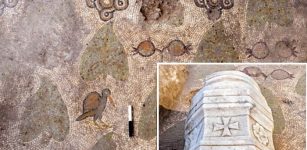 Extraordinary Ancient Mosaics, Crucifixes, And Long-Lost Church Discovered In The Holy Land
Archaeology | Dec 22, 2017
Extraordinary Ancient Mosaics, Crucifixes, And Long-Lost Church Discovered In The Holy Land
Archaeology | Dec 22, 2017 -
 World’s Oldest Shipwreck Discovered In Mediterranean
Archaeology | Apr 10, 2019
World’s Oldest Shipwreck Discovered In Mediterranean
Archaeology | Apr 10, 2019
